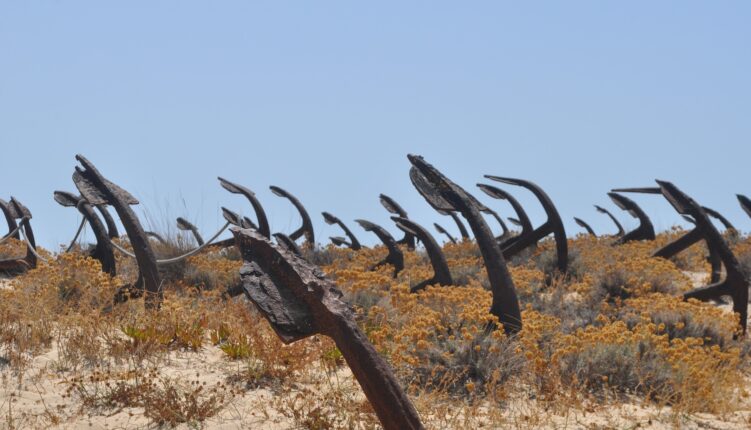For those who enjoy relaxing on the beach, Algarve is most definitely a paradise. Praia do Barril, located in the east of the region, is certainly no exception.
But perhaps the strangest sight on this beach is the lines of anchors, seemingly standing to attention.
Over 120 large anchors have been laid to rest in what is known as the Anchor Graveyard (Cemitério das Âncoras).
Praia do Barril was the centre of Algarve’s tuna fishing and had a small village used by up to 100 fishermen during the fishing season – April to September.
During the latter part of the 20th century, the tuna gradually changed their feeding/breeding ground and this caused the slow decline of the areas fishing industry.
The anchors now act as a barrier and help prevent beach drift and erosion of the island plus, of course, a remembrance of the era when fishing was so important to local people.
Originally the anchors were used to hold the nets which created a huge maze under the water, funnelling the fish into capture nets.
Praia do Barril is located on Ilha de Tavira, an 11kms-long island which is situated just off the town of Tavira.
There are three beaches on the island; Praia da Ilha de Tavira to the east which is the most popular, Praia da Terra Estreita in the centre and Praia do Barril which is located to the west.
Cleaned by the Atlantic, sand stretches for many kilometres and offers the opportunity to enjoy a peaceful day with very few people close, being a little further to walk to. There is no transport on the island.
Accessing the island is simple. From Pedras d’El Rei in Luz de Tavira there is a walkway and during the summer months, a small train uses the tracks that the fishermen used to bring their catch to the “mainland” to take people from the end of the walkway down to the beach.
Situated within the Ria Formosa Natural Park, the walk or train ride down to the beach can be informative and interesting. In particular look out for common chameleons, an endangered species native to Algarve.
Photo courtesy of Paco Benitez |Pixabay


2 thoughts on “Anchors away”